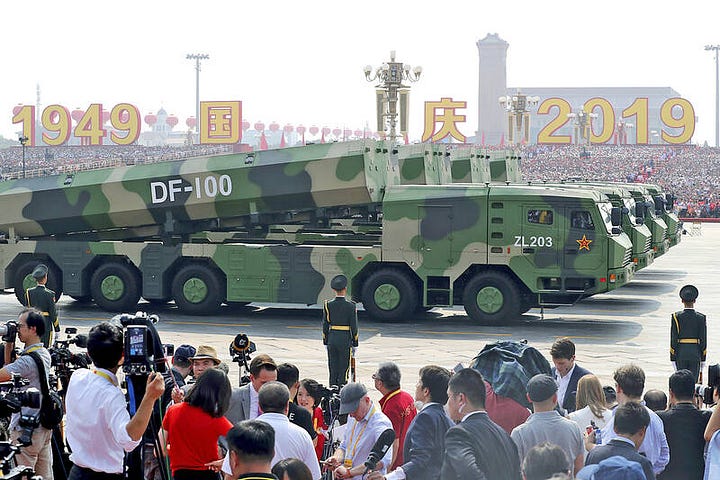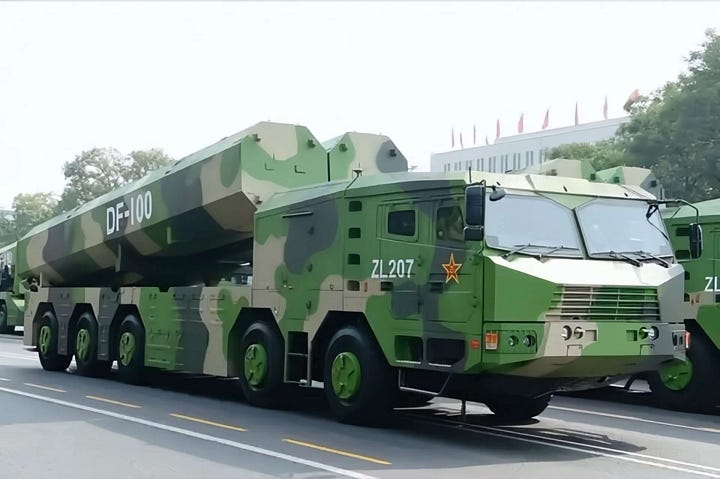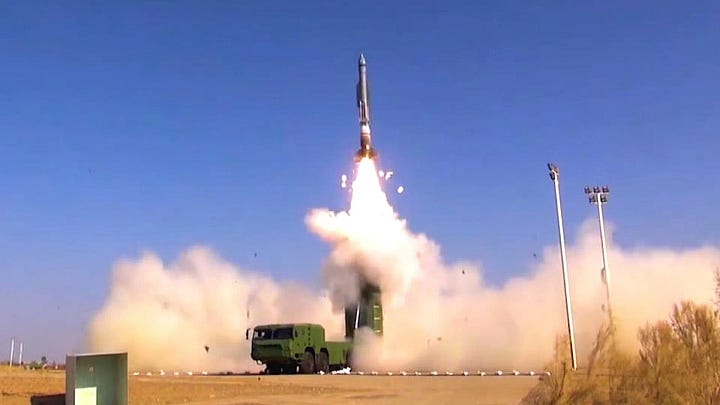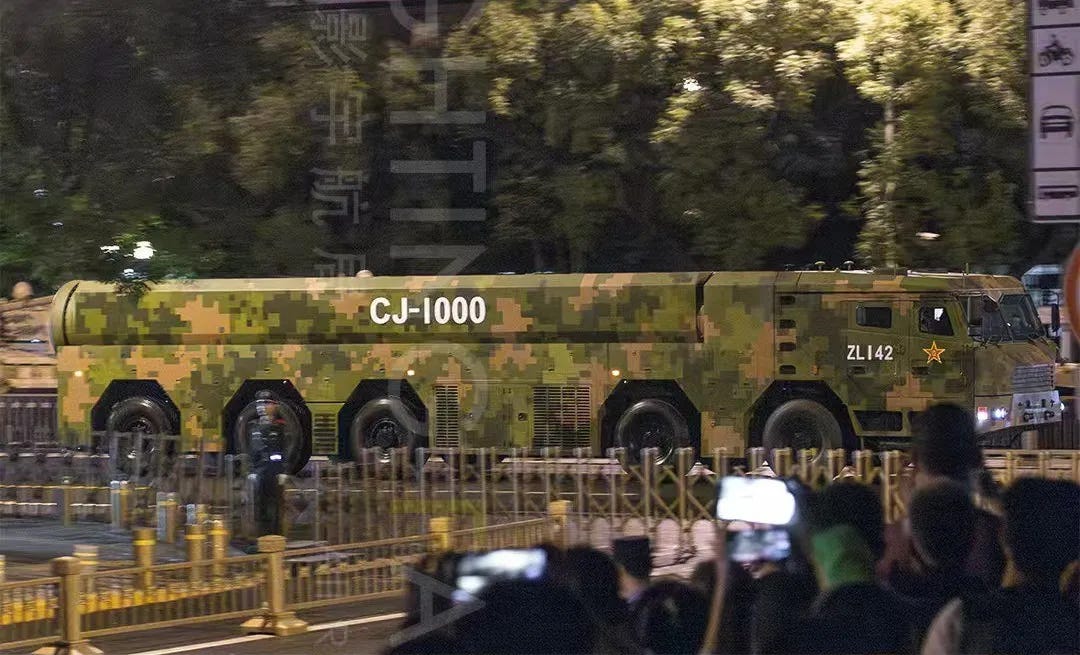Note: The following text was originally posted on my X/Twitter account.
While an eye-catching new cruise missile design that is set to be formally unveiled at the 3 September military parade in Beijing appears to be a subsonic anti-ship cruise missile with the designation YJ-18C that is unlikely to be associated with the PLA Rocket Force (PLARF), the presence of a seemingly new CJ-1000 (image 1) cruise missile suggests that the PLARF continues to be interested in cruise missile technology, broadly defined.
While the PLARF—formerly the Second Artillery Corps (SAC)—has been operating ground-launched land-attack cruise missiles in the form of the subsonic CJ-10/CJ-10A (also known as the DF-10 and DH-10) over the past fifteen or so years, it has only deployed the CJ-10/CJ-10A land-attack cruise missiles on a strikingly limited scale. The SAC-turned-PLARF instead focused on ballistic missiles and, in time, boost glide vehicles (BGV, also known as "hypersonic" glide vehicles/HGV). While likely motivated for the most part by the SAC-turned-PLARF's own priorities, this dynamic is best understood as part of a PLA-wide redistribution of roles and responsibilities over the 2010s in tandem with the new opportunities enabled by the steady expansion of China's military-industrial capabilities. Simply stated, the SAC-turned-PLARF increasingly focused on very high-end strike roles while the PLA Air Force and other PLA service branches were seemingly tasked with bringing "mass" to the table through various strike munitions, including air-launched subsonic land-attack cruise missiles launched from PLA Air Force bombers.
In October 2019, China unveiled the DF-100, a very large and reportedly supersonic land-attack cruise missile.




The existence of the DF-100 suggested that the SAC-turned-PLARF remained interested in cruise missile technology of a very different variety than the CJ-10/CJ-10A. Whereas the CJ-10/CJ-10A are subsonic designs that are reportedly powered by a turbofan engine, the DF-100 is reported to employ a liquid-fuelled propulsion system—possibly an air-breathing ramjet—after it is boosted to altitude by a large solid-propellant rocket motor (see image 4). Simply stated, the DF-100 reflected a very different take on cruise missile technology than the CJ-10/CJ-10A, which are best understood as functional analogues to the American BGM/UGM/RGM-109 Tomahawk, the Russian 3M54 Kalibr, and the Russian Kh-101 land-attack cruise missile designs. While the closest analogues to the DF-100 could be found in several late Cold War Soviet supersonic anti-ship cruise missile designs, the very large and very heavy Chinese supersonic cruise missile design appeared to be in a class all of its own.
While the DF-100 amounted to a new and potentially very effective approach through which the SAC-turned-PLARF could overcome the fast-evolving air and missile defences fielded by China's primary adversaries, public sources indicate a very limited scale deployment of the DF-100. While the possibility exists that the DF-100 was always intended to serve as a very niche munition, another hypothesis was that China had made such breakthroughs in BGV technology that the DF-100 became a much less competitive design by the time it could have been built and deployed in larger numbers. Unveiled alongside the DF-100 at the October 2019 military parade in Beijing was the DF-17, a medium-range BGV design that has since been deployed in very large numbers.
As of this writing, next to nothing is publicly known about the new CJ-1000 beyond the existence of wheeled five-axle launcher vehicles featuring said designation that are very similar in appearance to the five-axle launcher vehicles associated with the DF-100 from the time it was unveiled in October 2019. It is possible that the CJ-1000 amounts to a conceptually similar design, if not an improved version or derivative of the DF-100. Uncertainties notwithstanding, the presence of a wheeled launcher bearing the designation CJ-1000 suggests that cruise missiles—not necessarily subsonic land-attack cruise missiles in the mould of the existing CJ-10/CJ-10A land-attack cruise missiles or the new, seemingly non-PLARF associated YJ-18C anti-ship cruise missile—still have a place in PLARF's force structure. Time will tell whether the likes of the DF-100 and the CJ-1000 will be widely deployed or remain niche munitions deployed in very limited numbers, much like the subsonic CJ-10/CJ-10A have been over the past fifteen or so years.


